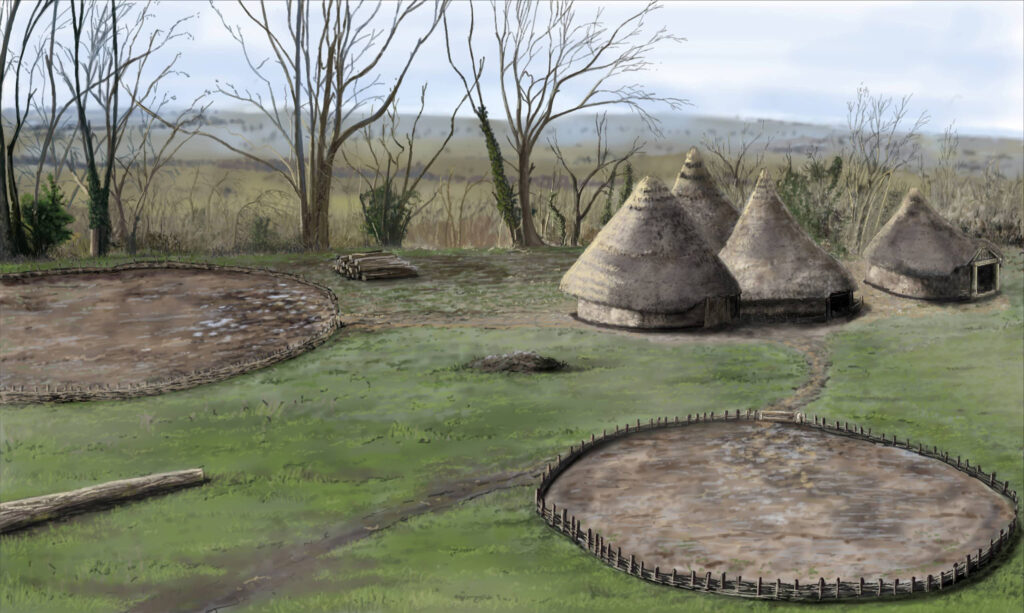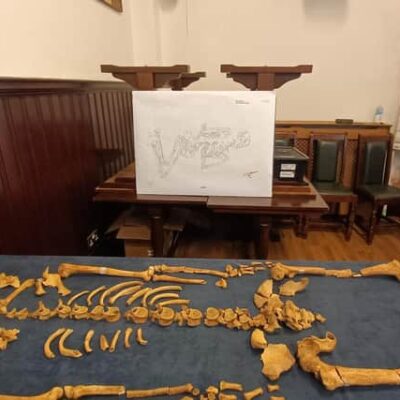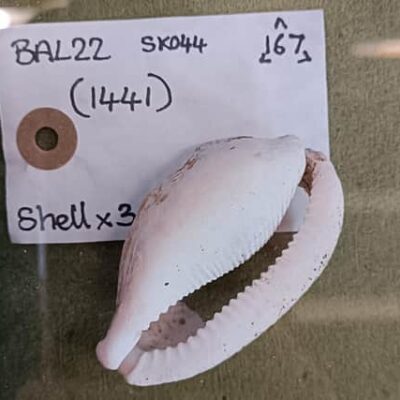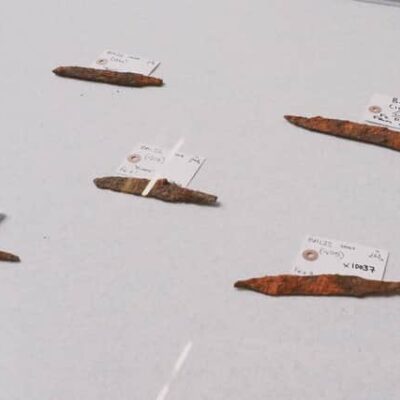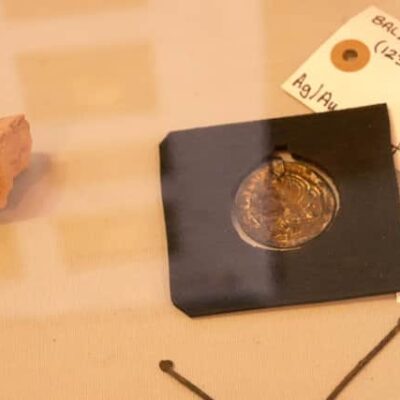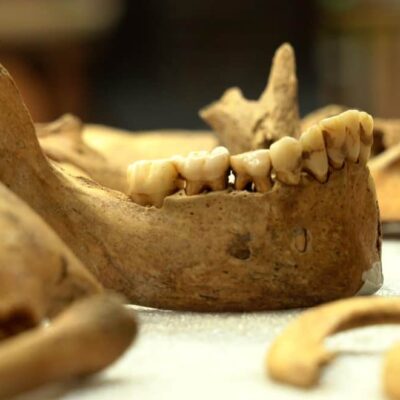In pictures: Archaeologists display prehistoric, Roman and Anglo-Saxon artefacts from Bretch Hill dig at Banbury Town Hall
Archaeologists held an event at Banbury Town Hall last week displaying some of the incredible prehistoric, Roman and Anglo-Saxon artefacts discovered at a new housing development site on Bretch Hill.
On Thursday (June 7), staff from Border Archaeology and Orbit Homes invited members of the public to view the collection of findings.
The artefacts were discovered from November 2022 until May 2023 at the Calthorpe Gardens site off Balmoral Avenue.
Colin Dean of Orbit Homes said: “We always check on any land we buy if there are any artefacts or anything of significance, and with Calthorpe Gardens we discovered quite a bit, which was very exciting.
“We do test digs on every site and never normally find anything, so it was really great to even find the first part, but more and more were found, and it was brilliant to watch it all happen.”
Among the findings displayed was evidence showing that a small but significant Iron Age settlement was once located on the top of Bretch Hill.
Director at Border Archaeology, Kostas Papagiannakis, said: “It was an amazing site with multi-phases, with the earliest phase we came across being the late Bronze Age.
“The whole area covered around 8,300 square metres and was on top of Bretch Hill. The first settlement we discovered consists of two and possibly three big circular enclosures, which date back to about 1150 years before Christ.
“After this, we found similar structures from the early Iron Age about 50 years later. The circular enclosures all have the entrance facing in the south-east direction to protect the settlements from the north-west wind and to get the most out of the morning sun.”
The over 9,310 litres of paleoenvironmental samples discovered by the archaeologists suggest that the Bretch Hill settlement was at its largest and most significant during the middle Iron Age to late Iron Age, around 300 years before Christ.
Kostas added: “This is the main phase of the settlement and includes five to six curvilinear features with the same orientation that indicate round houses; we also found animal pens and waste areas.
“The discovery of the waste areas is really important to us, so we can get an idea of their economy, their waste, and their diet. We found animal bones indicating they were eating a high amount of pigs; this probably means that the people who lived there were of high status because pigs were expensive then.”
The archaeological team also discovered two Roman coins and some Roman pottery from the 4th century, but they do not believe that a Roman settlement was ever present at the Calthorpe Gardens site.
Perhaps the biggest and most evidential finding was the discovery of an Anglo-Saxon burial site featuring 37 graves along with a selection of grave goods, including knives, jewellery and pottery.
Kostas said: “The site changed from a settlement to a cemetery in the early mediaeval period around the 7th century. We never found any traces of a settlement, but obviously they must have been living nearby to bury their dead relatives here.
“After sending off sandals for radiocarbon dating, we discovered that the cemetery was used from the 7th century until the 9th century, so it was used for more than 200 years as a burial site.”
Again, the archaeologists believed those buried at the site were of high status because of the vast number of gold-plated pendants and beaded necklaces found alongside the bodies, some of which are believed to have originated from the European continent or further from afield.
Visitors to Thursday’s event were able to get up close and personal with one of the skeletons dug up and also admire a selection of some of the 18,800 artefacts that were on display.
The skeleton of the adult male aged over 50 was found alongside a spearhead and was believed to have been a significant person within the community of the time due to the location of where he was buried.
The director of post-excavation services at Border Archaeology, Janice McLeish, was able to take visitors through the findings and offer some more information.
She said: “The grave goods are astounding in their volume and style. There are so many different types of materials; we have got glass, beads, metal work and pottery.
“It’s just a really remarkable assemblage to have on one site. This is definitely a regionally significant and potentially nationally significant find, because we were not expecting to find 52 burried Anglo-Saxon individuals at the top of the hill.
“The information that we could gather throughout the duration of the activity on the hill really helps us put it into context with other research and to answer questions that may not have been known about until now.
“Archaeology helps to fill in some of the blanks, and by doing sites like this, that gives us that piece of information that other sites can use as well to get informed about the local vicinity of Banbury.”
Kostas added: “This dig is very important because it demonstrates that there was human activity on this site for about 6,000 years continuously, and that is amazing to me.”
Many of the findings will now be sent off to other archaeologists and historical experts so that further information can be extracted from them, but Orbit Homes has said that they would like to see some of the artefacts end up in the Banbury Museum.
Source: Banbury Guardian
Video: Orbit Homes

